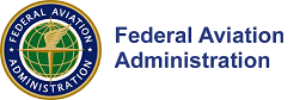The US Federal Aviation Administration (FAA) has a “bandwidth problem” when it comes to implementing new aviation regulations and needs more money and more people, according to the department’s unmanned aircraft systems integration office.
“The regulatory bandwidth is very, very narrow,” says Jim Williams. “The FAA is allowed 15 significant rulemakings per year. That’s all that the system can tolerate.”
Speaking at AUVSI’s Xponential conference on 2 May, he explained that the department considers about 100 rules each year and those are “racked and stacked” in terms of priority and eventually winnowed down to about 15. Others are bumped into later years.
“We’re in a situation where there’s just not enough resources,” says Williams. “Turning the federal ship in the right direction takes time and eventually it will get there.”
The agency has been venturing into uncharted territory as it tries to integrate unmanned aircraft into the national airspace system, as directed by Congress in the 2012 FAA Modernization and Reform Act. Thus far, it has released a draft small UAS rule that would regulate all drones weighing under 25kg (55lbs).
Air traffic manager Randy Willis of the FAA’s emerging technologies team has been supporting the integration effort. He says the unmanned aircraft community could help by becoming more educated on basic flight rules and regulations and the makeup of the airspace system.
“I’d like to see a more educated aviation system than we have right now,” he says. “We spend just a huge amount of time trying to educate the new aviators that are accessing our airspace today.
“If I had a wish, it’s that they’d be more educated in the existing rules and regulations that we have today.”
Source: Flightglobal


I agree with the Randy. UAS operators need to be more aware of the existing FAA rules and regulations. Those rules and regulations were established for based on a specific need for inherent safety of the national air space.
Yes, conditions are changing so the rules and regulations will need to be modified to work with the existing and future conditions. Because inherent safety is part of the consideration, there needs to be careful consideration of any and all changes.
Niel
I have no problem getting more education out to operators of small UAV’s. I have no problem with line of site, I have no problem with a max altitude of 300-400 ft, with speed. I DO have a problem with the current rule that requires me to pay for a minimum Sports Pilots license and pay to take that examine when I have positively NO intention of ever flying a regular fixed wing aircraft. All I want to do is fly 50-100 over a piece of property. Why do I need to take an examine to prove I know how to calculate how much frost is going to form on my wings at a certain speed and altitude. That’s way over kill on educating operators. All small UAV operators need to know are the basic FAA air traffic & communication rules, and perhaps some very basic understanding of weather patterns. The FAA could accomplish this with minimal education and a 25 question test.